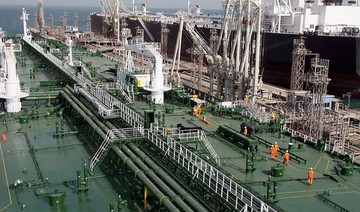MOSCOW: An independent Russian producer has made a foray into China’s market for liquefied petroleum gas (LPG), jostling with Middle Eastern countries for what could be a lucrative foothold, market data showed and traders said.
China is one of the world’s largest importers and consumers of the fuel. Key suppliers to the country are the UAE, Qatar, Kuwait and Saudi Arabia, which jointly account for more than 60 percent of China’s LPG imports.
Russia is one of the top oil exporters to China and is set to launch a gas export pipeline connecting the two countries by the end of this year. Its LPG supplies to China are small at this stage, but Moscow is expanding production.
According to rail statistics, Irkutsk Oil Co, known by the Russian acronym INK, shipped around 2,300 tons of propane and butane mixture by train toward the Far East Gas terminal in northeastern China between Aug. 16 and 26.
Despite past attempts by Sibur and Gazprom Neft, high logistics costs have so far prevented LPG exports to China from occurring regularly. But INK is located much closer to the Russia-China border than those firms, giving it a comparative advantage.
INK started producing LPG, which can be used in cars or to produce electric power and petrochemicals, in 2017 and began exports a year later. Until recently, INK was exporting LPG only to Europe.
It cranked up LPG output tenfold year-on-year in the January-June period to 77,000 tons thanks to the construction of a pipeline to a railway loading facility in Ust-Kut, eastern Siberia.
INK plans to increase LPG output to as much as 1 million tons per year by 2020-2021. INK is controlled by its management, with Goldman Sachs and the European Bank for Reconstruction and Development among minority shareholders.
INK declined to comment.
Traders said Swiss trader Avestra Chemical, a co-owner of the Far East Gas terminal, had been in talks with other Russian companies, including Sibur, Gazprom and Rosneft , about LPG supplies to China.
Igor Berezin, chief executive of Avestra Chemical, confirmed to Reuters that the Far East Gas terminal had received its first LPG cargoes from Russia. He declined to comment further.
The terminal, built last year, is set to boost its annual transhipping capacity to as much as 3 million tons in coming years from around 1.8 million tons currently.
Sibur, Rosneft and Gazprom did not respond to requests for comment.
China’s LPG imports rose 3.4 percent year-on-year in the first half of 2019 to 9.785 million tons, Chinese customs data shows.
IHS Markit, an information provider, expects LPG consumption in northeastern Asia to exceed 110 million tons per year by 2025 from 80 million tons in 2018 thanks to the launch of new processing units in China.














